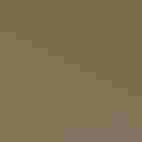Buff-collared Nightjar
At a Glance
Birders hearing it for the first time may have trouble believing that the Buff-collared Nightjar is a relative of the Whip-poor-will. Staccato, unbirdlike, the call sounds like the voice of an insect: a very large insect, perhaps, audible up to half a mile away over the dry hills at night. First found north of the Mexican border in 1958, this bird now spends the summer in several canyons in southern Arizona and southwestern New Mexico.
All bird guide text and rangemaps adapted from by Kenn Kaufman© 1996, used by permission of Houghton Mifflin Harcourt Publishing Company. All rights reserved.
Category
Upland Ground Birds
IUCN Status
Least Concern
Habitat
Arroyos and Canyons, Desert and Arid Habitats, Shrublands, Savannas, and Thickets
Region
Southwest
Behavior
Flap/Glide
Population
2.000.000
Range & Identification
Migration & Range Maps
Probably a permanent resident over most of its range. In Arizona and New Mexico, apparently arrives mostly in May, staying through August.
Description
9" (23 cm). Looks very much like Mexican Whip-poor-will (which also can show a buffy collar). Males may show more white in tail than Whip-poor-will. Best identified by sound.
Size
About the size of a Robin
Color
Brown, Gray, Tan, White
Wing Shape
Long, Rounded
Tail Shape
Long, Rounded, Square-tipped
Songs and Calls
A staccato cu-cu-cu-cuc-cuc-cuc-uh-chee-ah, heard at night.
Call Pattern
Flat, Rising
Call Type
Odd
Habitat
Desert canyons, rocky slopes. In the U.S., found mostly around 4,000 feet elevation in rocky canyons that have trees or dense brush along drainage and sparse growth on hillsides. In Mexico, found in various kinds of dry tropical forest and brush.
Sign up for ³Ô¹ÏºÚÁÏ's newsletter to learn more about birds like the Buff-collared Nightjar
Behavior
Eggs
2. Pale buff, heavily marked with spots of lavender and brown.
Young
Development of young and care by parents not well known. If danger threatens, adult may put on a distraction display, feigning a broken wing to lure predators away.
Feeding Behavior
Apparently forages at dusk and dawn, also on moonlit nights. Does much of its foraging by sitting on exposed perch at top of shrub or small tree and flying out to catch passing insects in midair. May also forage by flying up from the ground. Also makes longer flights of a minute or more, patrolling for insects.
Diet
Insects. Diet not known in detail, but undoubtedly includes large night-flying insects such as beetles and moths.
Nesting
Nesting behavior is not well known. Only a few nests have been found, mostly in Mexico. Male calls at night to defend territory and attract a mate. Nest site is on ground, usually in the shade of a shrub and often surrounded by dense thickets. No nest built, eggs laid on dead leaves or open soil.
Conservation
Conservation Status
Still very uncommon and localized north of the Mexican border. Widespread and common in Mexico.


